Dear Reader,
Today is the first day of October, which means it’s the first day of INKtober—a month-long challenge to create daily ink drawings. I heard of it for the first time in 2018 when I’d started drawing every day, and I loved it immediately. It got me practicing inking techniques like hatching and stippling as well as creating looser and juicier brush paintings in black and white. I LOVE black and white. I had pretty successful Inktobers in 2018 and 2019, but I wasn’t able to do it for the last two years, so I’m excited to jump back in this year. But I want to go in with a plan. Luckily, I’ve been reading Atomic Habits by James Clear, which is giving me new ways to think about habits of art.
Here are three of his strategies I’m applying for Inktober:
1. Start small (like atom-sized small)
The premise of the whole book is that small actions done regularly add up to big changes: “They seem to make little difference on any given day and yet the impact they deliver over the months and years can be enormous.”
For this month, my plan is to devote a modest 15 minutes per day to Inktober.
2. Don’t set goals, set up a system
I would normally say that my GOAL is to complete 31 ink drawings this month, but whoa, Clear says goals themselves don’t work! Instead we need a SYSTEM for achieving them: “Goals are about the results you want to achieve. Systems are about the processes that lead to those results.”
This idea has already shifted my thinking big time. So if my goal is to create a drawing every day in October, I need a SYSTEM for making it happen. I don’t know if I’m doing this right, but my system so far includes:
SPACE/SUPPLIES: I cleared off all the painting supplies on my desk and swapped in my inking supplies—india inks, calligraphy pens/nibs, Sakura Micron pens, a Windsor & Newton Sable Series 7 brush (#2), the amazing Pentel Pocket Brush Pen, a Pilot Fountain Pen that I really like, a fun Pentel Aquash Ink Brush—so they are out and ready each day.
MORE SUPPLIES: I got two journals that have paper I really like for ink (the ones I’ve been using recently are too absorbant and make the ink look dull): Canson Pen & Ink journal and Stillman & Burn Zeta Series 9 x 12 extra heavyweight white paper.
INSPIRATION: I got out some inking books for instruction, reference, and inspiration. See a few in my drawing above. (This can also a fun excuse to go to the library!)
PROMPTS: I’ve got the Inktober prompts ready (copied at the end of this post). I’m not sure I’ll use them, but when I’m not sure what to draw, they can be helpful.
DO-ABLE TIME: I’ve decided to dedicate the first 15 minutes of each day to drawing.
CONSTRAINT: As a constraint, I’m committing to only working with analog tools and supplies—no digital.
COMMUNITY: I’ll share my drawings on Instagram. I love sharing and getting inspiration from fellow artists there.
CHECK IT OFF: I will stamp each drawing with the date. Seems like a satisfying way to add a final bit of ink!
3. Write down your time, place, and planned action
Clear says that the best way to start a new habit is to write down what you will do along with when and where you will do it.
He cited a study where three groups of people were working on better exercise habits. One group was told to track how often they exercised, another group tracked their exercise and also studied the benefits of it, and a third group tracked their exercise, studied the benefits, AND wrote down a plan for their intended exercise: “I will partake in at least 20 minutes of vigorous exercise on [DAY] at [TIME] in [PLACE].” The first two groups had a 35-38% success rate of exercising at least once a week. The third group had a 91% success rate!
This is called an implementation intention—how you intend to implement the habit.
So, here it is for me:
Care to join? Care to share your system? Your implementation intention?
Here are the prompts!
Update, October 2024: For anyone reading this in 2024, here’s this year’s list:


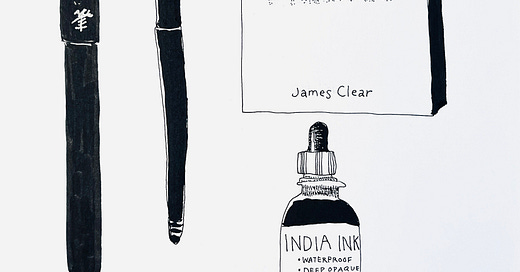



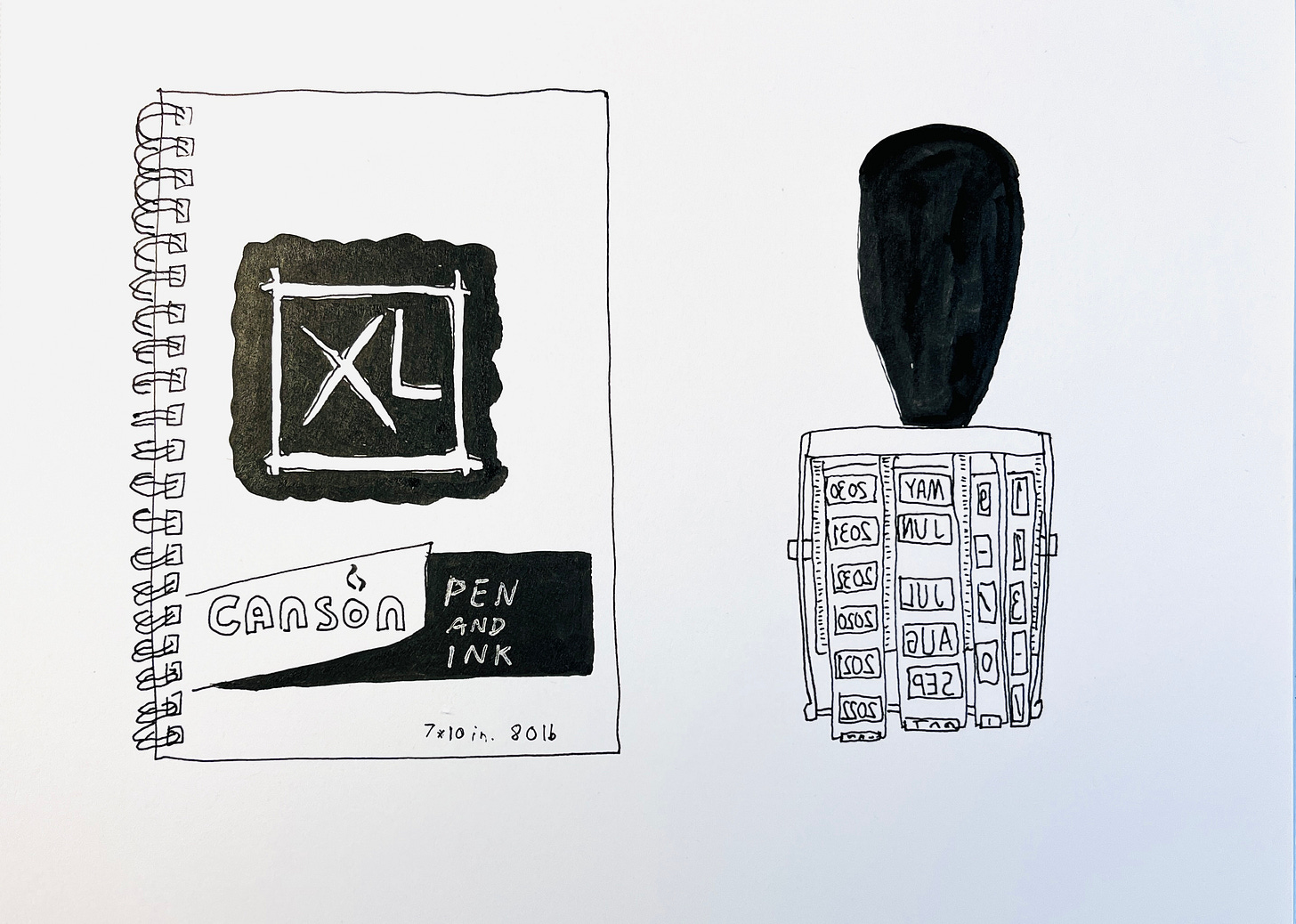
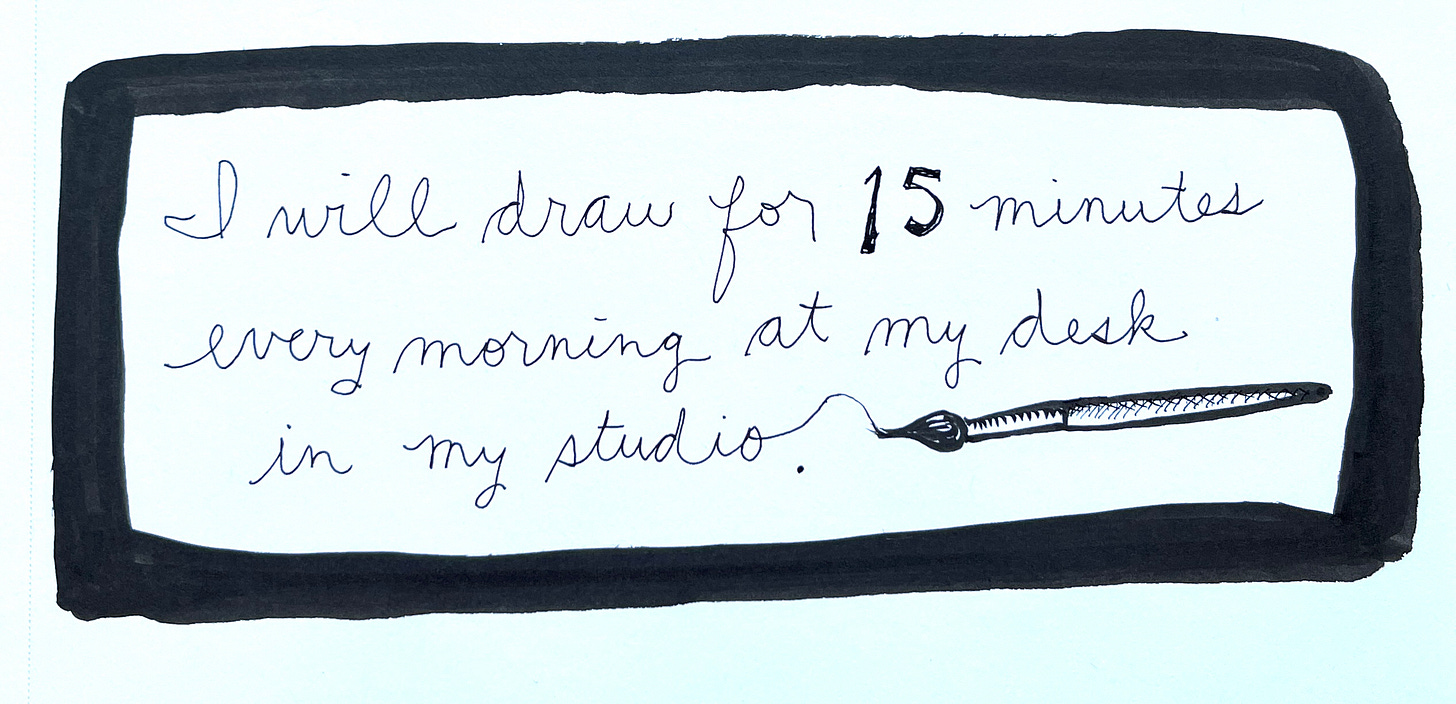
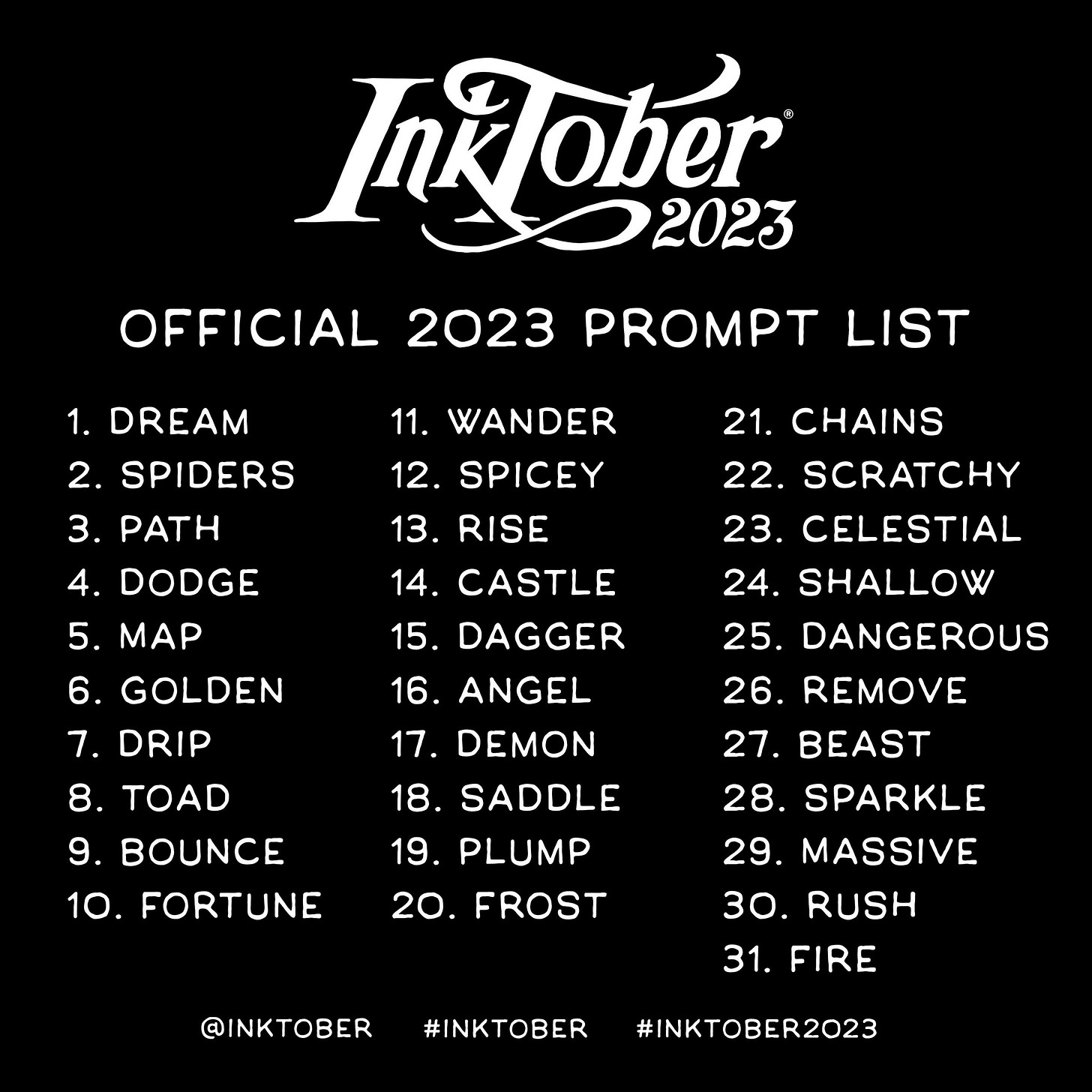
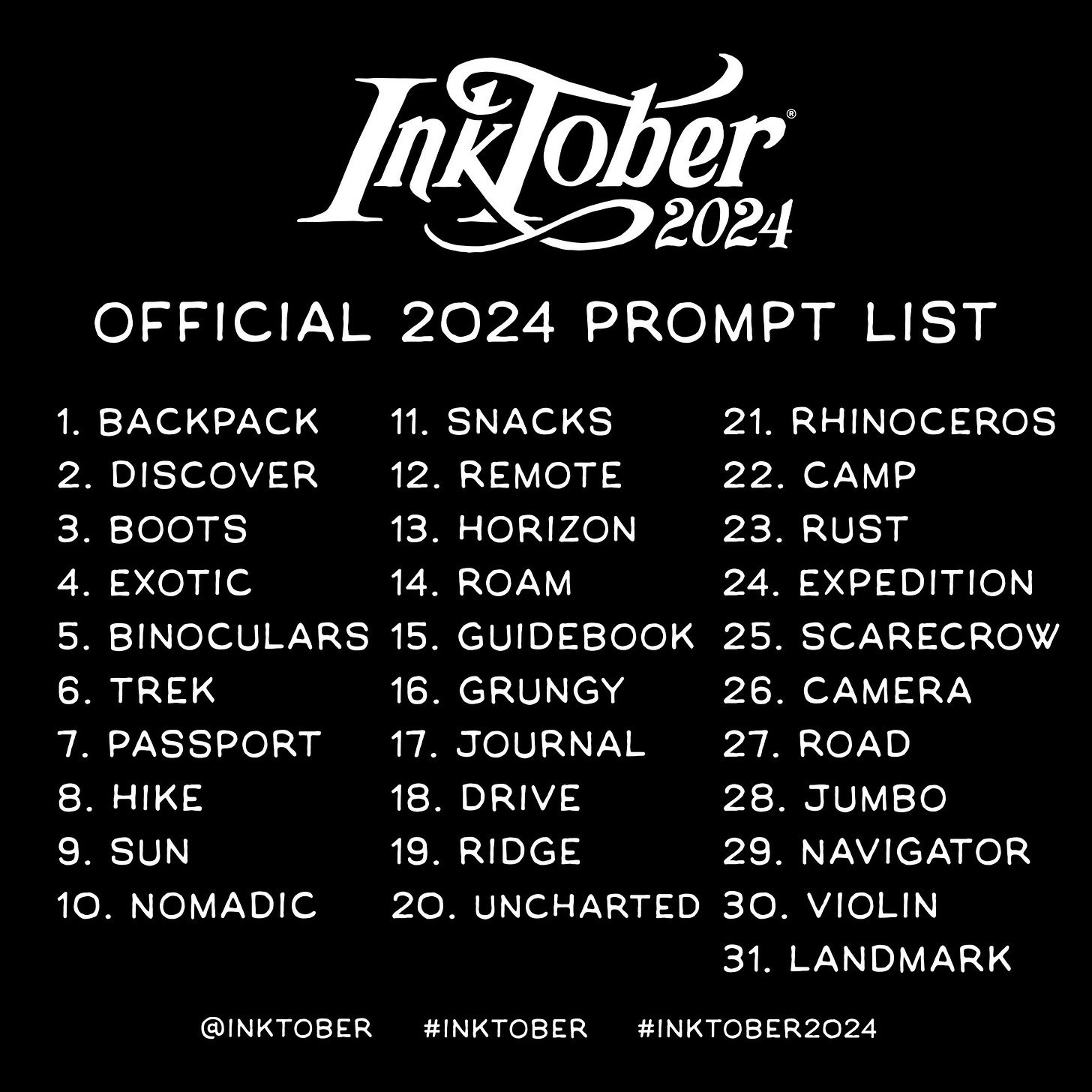
My wonderful mother-in-law, a retired high school librarian, would love the date stamp. 😉
dear kelcey,
this is great! i don't have a plan for inktober, but i do have plan for THINKtober. each day i will think of at least one thing. starting small! atomic habits is great! and atomic habits ARE great.
love,
myq
PS have you read "4000 Weeks: Time Management for Mortals" by Oliver Burkeman? it's fantastic.